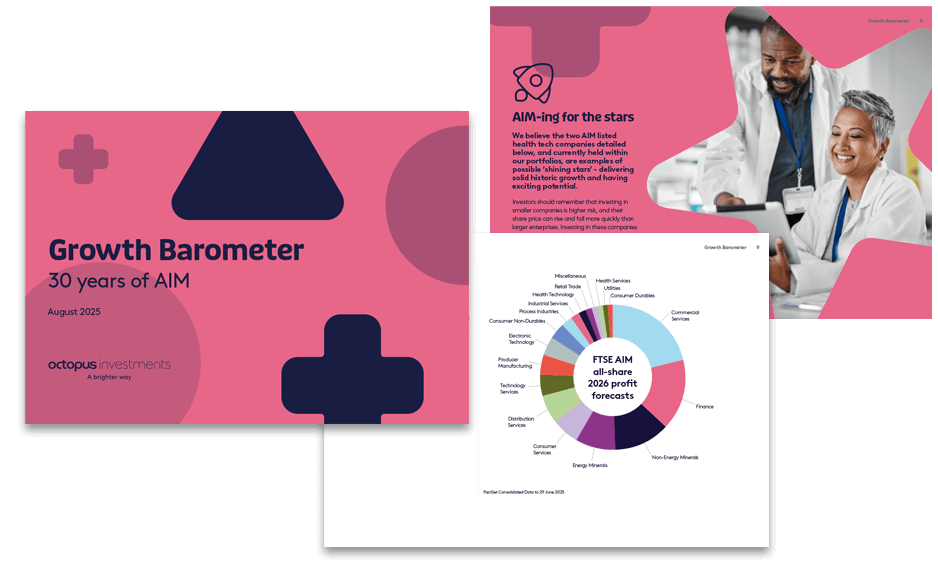WhitepaperBusiness ReliefInheritance tax
Business Relief and inheritance tax
Business Relief and trusts
Last updated: 5 December 2024
Business Relief and inheritance tax
Business Relief (previously called Business Property Relief or BPR) is a longstanding relief from inheritance tax (IHT). For suitable clients, it allows qualifying investments to be left to beneficiaries with relief from inheritance tax.
Where a Business Relief (BR) qualifying investment is made and held for at least two years, the asset should attract relief from IHT.
For deaths before 6 April 2026, unquoted BR qualifying investments (i.e. unquoted shares, sole traders, partnerships) and AIM BR qualifying investments are free from IHT for an unlimited value of BR asset.
For deaths after 6 April 2026, there will be a new £1 million allowance for unquoted BR investments held for 2 years, within which no IHT should be due. Excess values over this amount attract 50% IHT relief. For AIM BR investments will attract 50% IHT relief irrespective of value. Explore more information on this our post-Autumn Budget estate planning now and moving forward page.
Please bear in mind that investments that qualify for BR put an investor’s capital at risk and won’t be right for everyone. Tax treatment depends on individual circumstances which could change in the future.
Learn more about BR in our helpful Business Relief explained guide.
Ask Octopus
Do you have a question about inheritance tax and estate planning?
Use our free helpdesk to Ask Octopus

Business Relief trusts and inheritance tax implications for the donor
Business Relief trusts and inheritance tax implications for the donor
Lifetime transfers to a trust
A technical consultation is being held in 2025 by the government to consider how the new BR rules will be applied to trusts, including transfers into trust. This whitepaper focuses on the current rules for tax year 5 April 2024 – 6 April 2025.
There are two IHT points that the donor needs to consider on lifetime BR gifts to trusts.
- On gift: The gift of BR shares into trust should not be subject to IHT as there should be no chargeable lifetime transfer (CLT), provided they were held for at least two years at the time of gift.
- On death: The trust needs to hold the shares for seven years or, if earlier, at the time the donor dies, for the gift to continue to be free from IHT.
Trust sold the asset with replacement:
- If the trust has sold the BR qualifying shares within seven years and before the donor’s death, provided the trust reinvests 100% of the proceeds of sale in another BR qualifying asset within three years of sale, the donor’s estate should not be subject to IHT on the gift relating to the portion sold.
- If the trust has sold some of the shares within seven years and the donor dies, then the donor’s estate should be entitled to BR based on the percentage of the gift the recipient still holds at the death of the donor.
Trust sold asset without replacement:
If the trustee sold the BR qualifying assets and then the donor died, both within seven years of the gift, IHT would become payable, because tax at 40% due is calculated based on BR not applying.
Taper relief may be available, if the death is between three and seven years from the date of gift.
Trust has not sold the asset
If the trust has not sold the BR qualifying asset, and if the BR qualifying asset gifted are quoted shares, then there is no requirement for the shares to still be BR qualifying at the date of death of the transferor (or of the transferee if earlier), provided the shares remain unquoted. This is not the case for other BR assets. Explore our key Business Relief key considerations whitepaper on what makes a business BR qualifying.
Transfers on death to a trust
There should be no inheritance tax payable on the BR shares by the donor’s estate, provided the BR qualifying shares were held for at least two years on death. If they have held the asset for less than two years, it should be subject to inheritance tax in their estate.
Discretionary trusts, Business Relief, and periodic charges
Discretionary trusts, Business Relief, and 10 year periodic charges
Typically, up to 6% inheritance tax is charged on each 10 year anniversary of the creation of a trust, on the value of trust assets over the nil rate band.
However, where a trust held only BR assets (and held them for two years), at the 10 year anniversary the inheritance tax rate should be 0%.
Where the settlor held the BR (previously called BPR) shares for at least two years on death, the shares should immediately qualify for BR in the hands of the trust at the point of 10 year periodic charge. As it is deemed to have held the shares for two-years. This does not apply for in-life transfers to trusts.
Discretionary trusts, Business Relief, and exit charges
Discretionary trusts, Business Relief, and exit charges
Typically, the transfer of assets from a trust to beneficiaries is subject to an exit charge of up to 6% inheritance tax.
The precise rate will depend on if the exit was before or after the 10 year charge.
Exits before 10 year charge:
For exits before the first 10 year charge, typically the charge is based on the value of the trust at outset, any failed potentially exempt transfers or chargeable lifetime transfers made by settlor, and the length of time before the 10 year charge.
However, exits of BR qualifying assets should not be subject to IHT.
As above, where the donor has held the BR qualifying shares for at least two years on death, the shares should qualify for BR qualifying in the hands of the trust at the point of an exit charge, as the trust is deemed to have held the shares for two years, irrespective of whether the trust has held the shares for two years. This does not apply for in-life transfers.
Exits after 10 year charge:
Where a trust held only BR qualifying assets (and held them for two years) at the 10 year charge, the inheritance tax rate would have been 0%.
For exits after the first 10 year charge, the rate of inheritance tax is based on the rate paid on the last periodic 10 year charge (if applicable).
This means exits from the trust in the next ten years should have a 0% inheritance tax rate applied also.
Immediate post death interest trusts and Business Relief
Immediate post death interest trusts and Business Relief
An interest in possession trust (IIP) also called a life interest trust, is a trust where a person benefits from the trust assets throughout their life (“the life tenant”). On the life tenant’s death, the assets are passed to the ultimate beneficiaries (“the remaindermen”).
An immediate post death interest (IPDI) trust is an IIP trust created on the death of the settlor.
The assets of an IPDI trust are included in the life tenant’s estate for inheritance tax purposes when they pass away.
Where the beneficiary is not a spouse or civil partner and provided any BR qualifying asset held in the trust has been held for two years by the trust, the life tenant should not be subject to inheritance tax on the BR assets, as it should be 0% rated in their estate. Where the donor has held the BR shares for at least two years on death, the shares should qualify for BR in the life tenant’s estate on death, as it would be deemed to be held for the required two years.
Where the settlor has held the BR shares for at least two years on death, the shares should qualify for BR in the life tenant’s estate on death, as it would be deemed to be held for the required two years.
Where an IPDI trust was created on the death of a spouse and the surviving spouse is the life tenant of the trust, the surviving spouse is deemed to take on the BR ownership period of the deceased spouse. It does not matter if the structure is an IPDI trust.
This means, if the deceased spouse held BR shares for two years on death and the BR qualifying assets pass to the IPDI trust, the surviving spouse life tenant is deemed to have held the BR qualifying shares for two years also.
Tax legislation, rates and allowances are correct at time of publishing for the tax year 6 April 2024 – 5 April 2025.
From 6 April 2026, a 100% IHT relief will continue for the first £1 million of combined agricultural and unquoted Business Relief qualifying property (e.g. sole traders, partnerships, unquoted companies). Amounts over the £1 million will attract 50% IHT relief. Business Relief qualifying companies listed on the Alternative Investment Market (AIM), will attract 50% IHT relief irrespective of the investment amount.
Related resources
Related resources
Estate planning now and moving forward
Equip your clients with the future. Discover estate planning strategies to safeguard wealth and ensure a smooth legacy transition.
Discretionary trusts
A discretionary trust grants trustees the authority to determine the distribution of trust assets, both capital and income, to beneficiaries, providing flexibility and protection of assets in changing circumstances.
Interest in possession trusts
Learn how interest in possession trusts provide beneficiaries with income rights while managing inheritance tax.




